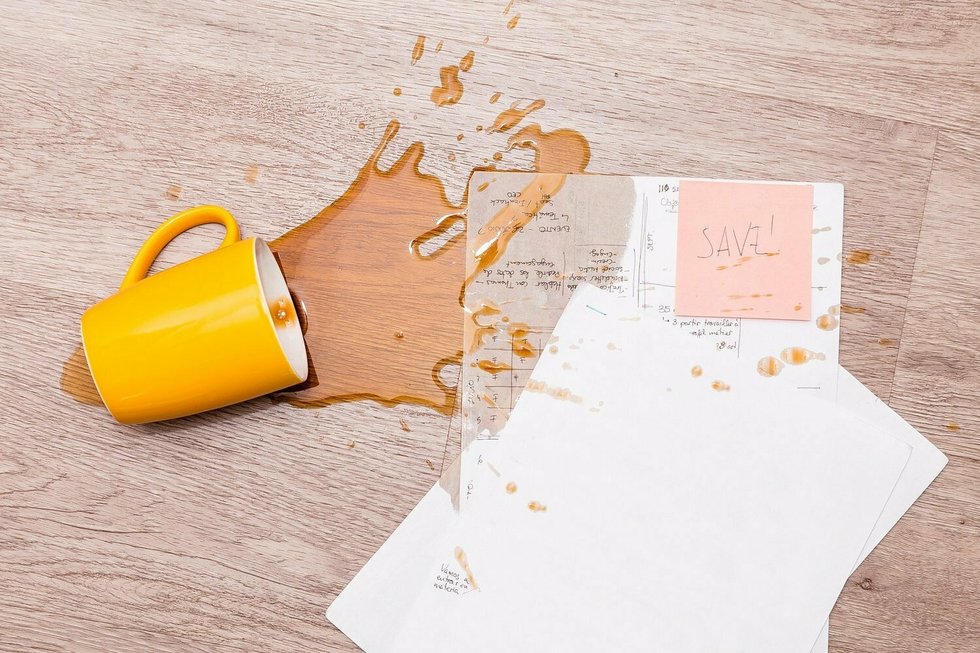The art of screwing up: turning mistakes into golden opportunities
Mar 07, 2022
5 mins


Redactor freelance especializado en tecnología y startups
Imagine you’re in a bookstore, looking for a book to grab your attention. You come across one that actually looks like a mistake: the back cover is on the front cover – and vice versa. The spine isn’t where it should be and the opening pages are at the end. It feels weird, but it isn’t. You’re actually holding a deliberate “mistake” created by Erik Kessels, a Dutch artist and author, who believes that errors can become roaring successes – as long as you know how to harness them. In his book “Failed It! How to turn mistakes into ideas and other advice for successfully screwing up,” Kessels highlights how we can turn our failures into potential triumphs. Here’s what we learned.
“This book is dedicated to the accidental art of mistakes,” Erik Kessels states.
Over the course of the book, the author showcases dozens of examples of high-profile errors in design, architecture, marketing and other fields in which someone made history after messing up while doing their job. He later details how each blunder survived and even inspired others to replicate the same formula – mistake included.
Great accidents
“Just because something isn’t in line with its original aim or because initial calculations are out by a few centimeters doesn’t mean that the (unforeseen) result won’t end up being a stroke of genius.”
As Kessels explains in Failed It!, even the most insignificant of errors can end up changing history. A good example of this is what many of us carry around in our pockets today. In the 1990s, Apple launched its PDA (a pocket handheld digital assistant), the Newton, which failed to make much of a splash and was discontinued. However, it proved to be the seed of an idea that would lead to another product being released 14 years later, one that would be hailed as a major revolution. Anyone heard of the iPhone?
Coca-Cola and pacemakers had similar beginnings: they were mistakes that led to something unexpected and later became a success. Coca-Cola, for example, started out as a syrup for digestive ailments and to provide energy. Although it didn’t prove successful for those purposes, it shortly became a sales juggernaut as a soft drink. And we all know how the rest of the story goes for the multinational.
The pacemaker on the other hand was designed as a device to record the heart rate with the simple aim of obtaining more information about the organ. However, its poor design meant that its circuitry emitted intermittent electrical pulses instead of just recording them: someone realized that the pacemaker could be used to regulate the beating of the heart. A fortuitous moment which ended up saving millions of lives.
All these examples highlight how we mustn’t crumble when a product turns out wrong. What’s the point of becoming disheartened when we’re the ones screwing up? Even when we’ve made a complete hash of things, there’s always an element that we can salvage or a new perspective we can find that can prove useful to us – either for now or in the future.
Against the rules
“Play with assumptions, make people look and think twice. Truth is there only to be questioned and challenged.”
Creative professionals are renowned for their readiness not just to challenge others but also themselves. To do this, they often use ambiguity. Or they attempt to confuse or to produce creations that need to be studied carefully if all their facets are to be appreciated fully. This makes their work more memorable and unique.
Kessels uses the example of Photoshop: Adobe’s photo and graphic design tool. It’s one of the world’s most popular digital products for removing “blemishes”. These could be things we don’t like about our bodies, the guy in the background who’s ruining a photo or even the inconsiderate power line ruining a perfect landscape. However, you can turn this use on its head. For example, magnify and harness these imperfections just like artist Lucas Blalock, who creates abstract and surreal images based on these imperfections instead of disguising them.
Another conceptual artist, Joan Fontcuberta – the first Spaniard to win the Hasselblad award, considered to be the Nobel prize for photography – is an expert in experimenting with framing and exposure all with the aim of blurring the lines between reality and fiction. And even under the watchful gaze of experts. The Catalan photographer became particularly famous in the early 1990s for taking photographs of constellations that had never been observed before – not even by NASA. Critics questioned how this could be possible until they saw the collection’s last photograph, which revealed that the pictures were actually compositions made from the smudges on a dirty windshield.
Unique stories
“Perfect is the enemy of the good. Free yourself from the tyranny of perfection! Never surrender!”
Within the creative professions, every supposed mistake, every single imprecision and every single outcome that isn’t in line with our expectations can be turned into gold as long as we learn how to channel them and how to identify that opportunity. Instead of obsessing over perfection , allow your mistakes to evolve. That way, you may end up with a superior outcome – despite not following the norm and not doing what’s expected of you… or what you hoped to achieve.
Kessel illustrates this with the story of an amateur photographer and owner of a dog with jet black hair. For budding photographers, one of the greatest challenges is taking photos of very dark objects, where an absence of reflectivity prevents you from seeing details and textures with clarity. Over the years, the photographer amassed dozens of photos that he’d tried to take of his pet and failed. It was only at the end of the dog’s life that the photographer finally managed to get a clear photo of his canine companion: a lousy overexposed photo from a technical perspective, but one that was highly symbolic from an emotional perspective for anyone who knew the story behind the photo.
The photographer never actually managed to get a decent photo of his dog, but all the bad photos together (all the dark ones and the overexposed one) told a moving story which originated from the mistakes of a desperate amateur photographer. It would have been normal to have thrown out the overly dark photos and start from scratch in the quest for the perfect photo. However, this would have told a much more boring story and one that would have easily been forgotten.
Stop overcomplicating
“Play with something ordinary and make it extraordinary. Don’t worry what you might be destroying; think about what you’re creating.”
If we think about scenarios in which we strive for perfection, one common situation is when posing for photos in front of a backdrop at a major event. Kessels experienced a mishap-cum-creative-success at one such event: as he was posing in front of a backdrop, one of the laminates behind him came loose and fell on his head. It was an accident, but instead of trying to ignore it or fix it, Kessels left the laminate on his head while posing. That “error” made for a much more striking and memorable moment than if nothing had happened or if Kessels had simply tried to fix the panel before posing once again.
Trying to solve problems with complex solutions is common. It’s as if we expect to constantly have to reinvent the wheel when, in reality, we may need only a simple solution to be able to move forward. One of the tenets of design is KISS (keep it simple, stupid!) and this can be applied to any professional domain. Wanting to over-complicate your work can be one of the most detrimental practices carried out by professionals. You don’t need to go round and round in search of engineering solutions: you may just need to opt for the simple solution! Apply this rule to your workflow as much as you can and adapt it as you see fit. This way, you may get better results in less time.
Kessler’s book is a dose of pure inspiration for anyone not accustomed to breaking the rules or for anyone who is afraid of doing so because they believe that straying off the beaten path only leads to mistakes that deserve to be forgotten. This couldn’t be further from the truth; mistakes can be the first step toward something much greater. Just remember that the Leaning Tower of Pisa is leaning only because someone once believed that its foundations only needed to be 10 feet deep. It probably wouldn’t be as popular as it is today if it had been built correctly. So, don’t stress out about your mistakes; learn to harness them.
Photo: Welcome to the Jungle
Translated by Jamie Broadway
Follow Welcome to the Jungle on Facebook on LinkedIn and on Instagram and subscribe to our newsletter to get our latest articles every day!

More inspiration: Manage your stress

Digital debt: when Slack and Zoom kill your productivity... and mental health
Notification overload isn't only a distraction disaster but can lead to severe stress, anxiety and even burnout
Jul 06, 2023

What is positive stress?
Stress boosts our focus, resilience and energy but can also burn us out. So when does one of our greatest assets become an enemy?
Jun 13, 2023

Surviving the startup jungle: thriving in a fast-paced work environment
As Mental Health Awareness Month comes to an end, we take a look at how to build resilience in a fast-paced environment.
May 29, 2023

When stress becomes your ally
Focus, problem solving and creativity are all products of positive stress. But how do you harness the power of adrenaline without its side effects?
Nov 14, 2022

Heads up, here’s how to deal with cognitive overload at work
Beware of mental overload at work! Find out how to maintain your cognitive balance in the era of open-plan offices and endless notifications.
Aug 23, 2022
The newsletter that does the job
Want to keep up with the latest articles? Twice a week you can receive stories, jobs, and tips in your inbox.

Looking for your next job?
Over 200,000 people have found a job with Welcome to the Jungle.
Explore jobs